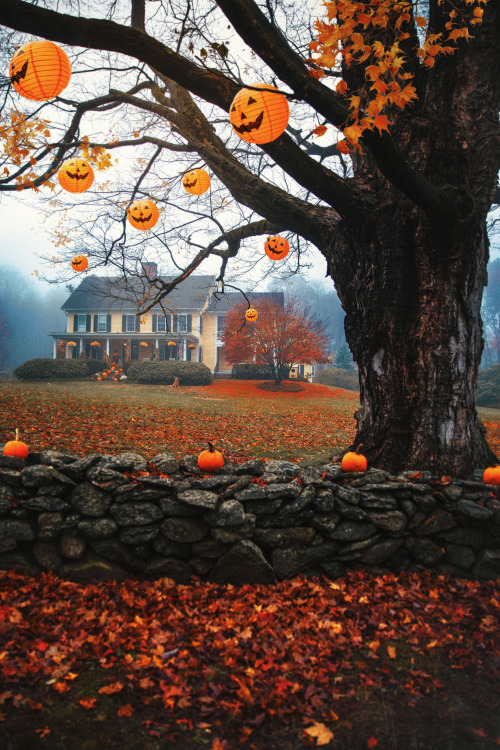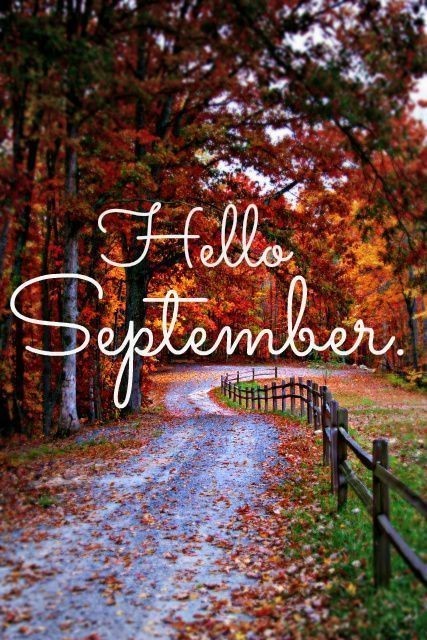Monstrous-mind - The Monster Mind
More Posts from Monstrous-mind and Others
🍁🍂

🛰️🌌🪐☄️🍂🍁

Hubble Sees Possible Runaway Black Hole Creating a Trail of Stars
There's an invisible monster on the loose, barreling through intergalactic space so fast that if it were in our solar system, it could travel from Earth to the Moon in 14 minutes. This supermassive black hole, weighing as much as 20 million Suns, has left behind a never-before-seen 200,000-light-year-long "contrail" of newborn stars, twice the diameter of our Milky Way galaxy. It's likely the result of a rare, bizarre game of galactic billiards among three massive black holes.
The black hole lies at one end of the column, which stretches back to its parent galaxy. There is a remarkably bright knot of ionized oxygen at the outermost tip of the column. Researchers believe gas is probably being shocked and heated from the motion of the black hole hitting the gas, or it could be radiation from an accretion disk around the black hole. "Gas in front of it gets shocked because of this supersonic, very high-velocity impact of the black hole moving through the gas. How it works exactly is not really known," said van Dokkum.
This intergalactic skyrocket is likely the result of multiple collisions of supermassive black holes. Astronomers suspect the first two galaxies merged perhaps 50 million years ago. That brought together two supermassive black holes at their centers. They whirled around each other as a binary black hole.
Credit: NASA
What’s Up For September 2018?
Outstanding views Venus, Jupiter, Saturn and Mars with the naked eye!

You’ll have to look quickly after sunset to catch Venus. And through binoculars or a telescope, you’ll see Venus’s phase change dramatically during September - from nearly half phase to a larger thinner crescent!

Jupiter, Saturn and Mars continue their brilliant appearances this month. Look southwest after sunset.

Use the summer constellations help you trace the Milky Way.

Sagittarius: where stars and some brighter clumps appear as steam from the teapot.

Aquila: where the Eagle’s bright Star Altair, combined with Cygnus’s Deneb, and Lyra’s Vega mark the Summer Triangle.

Cassiopeia, the familiar “w”- shaped constellation completes the constellation trail through the Summer Milky Way. Binoculars will reveal double stars, clusters and nebulae.

Between September 12th and the 20th, watch the Moon pass from near Venus, above Jupiter, to the left of Saturn and finally above Mars!

Both Neptune and brighter Uranus can be spotted with some help from a telescope this month.

Look at about 1:00 a.m. local time or later in the southeastern sky. You can find Mercury just above Earth’s eastern horizon shortly before sunrise. Use the Moon as your guide on September 7 and 8th.

And although there are no major meteor showers in September, cometary dust appears in another late summer sight, the morning Zodiacal light. Try looking for it in the east on moonless mornings very close to sunrise. To learn more about the Zodiacal light, watch “What’s Up” from March 2018.

Watch the full What’s Up for September Video:
There are so many sights to see in the sky. To stay informed, subscribe to our What’s Up video series on Facebook.
Make sure to follow us on Tumblr for your regular dose of space: http://nasa.tumblr.com
Astronomy From 45,000 Feet
What is the Stratospheric Observatory for Infrared Astronomy, or SOFIA, up to?

SOFIA, the Stratospheric Observatory for Infrared Astronomy, as our flying telescope is called, is a Boeing 747SP aircraft that carries a 2.5-meter telescope to altitudes as high as 45,000 feet. Researchers use SOFIA to study the solar system and beyond using infrared light. This type of light does not reach the ground, but does reach the altitudes where SOFIA flies.

Recently, we used SOFIA to study water on Venus, hoping to learn more about how that planet lost its oceans. Our researchers used a powerful instrument on SOFIA, called a spectrograph, to detect water in its normal form and “heavy water,” which has an extra neutron. The heavy water takes longer to evaporate and builds up over time. By measuring how much heavy water is on Venus’ surface now, our team will be able to estimate how much water Venus had when the planet formed.

We are also using SOFIA to create a detailed map of the Whirlpool Galaxy by making multiple observations of the galaxy. This map will help us understand how stars form from clouds in that galaxy. In particular, it will help us to know if the spiral arms in the galaxy trigger clouds to collapse into stars, or if the arms just show up where stars have already formed.

We can also use SOFIA to study methane on Mars. The Curiosity rover has detected methane on the surface of Mars. But the total amount of methane on Mars is unknown and evidence so far indicates that its levels change significantly over time and location. We are using SOFIA to search for evidence of this gas by mapping the Red Planet with an instrument specially tuned to sniff out methane.

The plumes, illustrated in the artist’s concept above, were previously seen in images as extensions from the edge of the moon. Next our team will use SOFIA to study Jupiter’s icy moon Europa, searching for evidence of possible water plumes detected by the Hubble Space Telescope. The plumes were previously seen in images as extensions from the edge of the moon. Using SOFIA, we will search for water and determine if the plumes are eruptions of water from the surface. If the plumes are coming from the surface, they may be erupting through cracks in the ice that covers Europa’s oceans. Members of our SOFIA team recently discussed studying Europa on the NASA in Silicon Valley Podcast.

This is the view of Jupiter and its moons taken with SOFIA’s visible light guide camera that is used to position the telescope.
🔭🌃🌌

Alnitak Region with the Horse Head and Flame Nebulae
by Warren Keller
🎃🍁🍂🎃

👏🍁🍂🌄🎃


The NASA/ESA Hubble Space Telescope captures the iridescent tapestry of star birth in a neighbouring galaxy in this panoramic view of glowing gas, dark dust clouds, and young, hot stars.
Credit: NASA/ESA and the Hubble Heritage Team (AURA/STScI/HEIC)
🍂🍁🏔️🌨️🌌

Mark Basarab
🍁🍂🎃🍂🍁🌬🍃🐈🌄

Hello September. May you the first of so many good things to come as the unofficial start to autumn 🍂
-
 pringlewrinkle liked this · 1 month ago
pringlewrinkle liked this · 1 month ago -
 tenminustplusbisben liked this · 1 month ago
tenminustplusbisben liked this · 1 month ago -
 waybear1949 liked this · 1 month ago
waybear1949 liked this · 1 month ago -
 disturbedknucklehead reblogged this · 1 month ago
disturbedknucklehead reblogged this · 1 month ago -
 daydreamsallthetime reblogged this · 1 month ago
daydreamsallthetime reblogged this · 1 month ago -
 justdoit5566 liked this · 1 month ago
justdoit5566 liked this · 1 month ago -
 oodalr liked this · 1 month ago
oodalr liked this · 1 month ago -
 little-hell-and-co liked this · 1 month ago
little-hell-and-co liked this · 1 month ago -
 melonieann reblogged this · 1 month ago
melonieann reblogged this · 1 month ago -
 becousemywifewantmeto liked this · 1 month ago
becousemywifewantmeto liked this · 1 month ago -
 loveforfashionandbeauty liked this · 1 month ago
loveforfashionandbeauty liked this · 1 month ago -
 blu-4ever liked this · 2 months ago
blu-4ever liked this · 2 months ago -
 blu-4ever reblogged this · 2 months ago
blu-4ever reblogged this · 2 months ago -
 strangetastemakersandwich liked this · 2 months ago
strangetastemakersandwich liked this · 2 months ago -
 cowboy--44 liked this · 2 months ago
cowboy--44 liked this · 2 months ago -
 photoshop68 liked this · 2 months ago
photoshop68 liked this · 2 months ago -
 bradtylr liked this · 2 months ago
bradtylr liked this · 2 months ago -
 wintersxkiss reblogged this · 2 months ago
wintersxkiss reblogged this · 2 months ago -
 faezun liked this · 2 months ago
faezun liked this · 2 months ago -
 enchantingwolfduck liked this · 2 months ago
enchantingwolfduck liked this · 2 months ago -
 featheredfriend reblogged this · 2 months ago
featheredfriend reblogged this · 2 months ago -
 edileusablog liked this · 2 months ago
edileusablog liked this · 2 months ago -
 harveyspecter30 liked this · 2 months ago
harveyspecter30 liked this · 2 months ago -
 georges95 liked this · 2 months ago
georges95 liked this · 2 months ago -
 foggywinnerwerewolf liked this · 2 months ago
foggywinnerwerewolf liked this · 2 months ago -
 7seas1906 liked this · 2 months ago
7seas1906 liked this · 2 months ago -
 sophisticatedloserchick liked this · 2 months ago
sophisticatedloserchick liked this · 2 months ago -
 curious-spectator liked this · 3 months ago
curious-spectator liked this · 3 months ago -
 conservativelibertarianmo reblogged this · 3 months ago
conservativelibertarianmo reblogged this · 3 months ago -
 intrigue49 liked this · 3 months ago
intrigue49 liked this · 3 months ago -
 brix2build reblogged this · 3 months ago
brix2build reblogged this · 3 months ago -
 brix2build liked this · 3 months ago
brix2build liked this · 3 months ago -
 ollekalle2-blog liked this · 3 months ago
ollekalle2-blog liked this · 3 months ago -
 isthatdrakeomg reblogged this · 3 months ago
isthatdrakeomg reblogged this · 3 months ago -
 doomxdriven liked this · 3 months ago
doomxdriven liked this · 3 months ago -
 wintersxkiss liked this · 3 months ago
wintersxkiss liked this · 3 months ago -
 annesophielabonte reblogged this · 3 months ago
annesophielabonte reblogged this · 3 months ago -
 andreyracer liked this · 3 months ago
andreyracer liked this · 3 months ago -
 cupkakie liked this · 3 months ago
cupkakie liked this · 3 months ago -
 gracada reblogged this · 3 months ago
gracada reblogged this · 3 months ago -
 transparentjeanjhacob reblogged this · 3 months ago
transparentjeanjhacob reblogged this · 3 months ago -
 sweetsurrender4u reblogged this · 3 months ago
sweetsurrender4u reblogged this · 3 months ago -
 sweetsurrender4u liked this · 3 months ago
sweetsurrender4u liked this · 3 months ago
My ambition is handicapped by laziness. -C. Bukowski Me gustan las personas desesperadas con mentes rotas y destinos rotos. Están llenos de sorpresas y explosiones. -C. Bukowski. I love cats. Born in the early 80's, raised in the 90's. I like Nature, Autumn, books, landscapes, cold days, cloudy Windy days, space, Science, Paleontology, Biology, Astronomy, History, Social Sciences, Drawing, spending the night watching at the stars, Rick & Morty. I'm a lazy ass.
222 posts